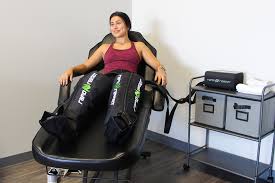When we admire professional athletes for their jaw-dropping performances, we often focus on the physical intensity: the sprint down the court, the power of a serve, the perfect goal. But behind every highlight reel lies something far less visible and equally important: time management. The ability to balance training with recovery is one of the most crucial, yet underrated, skills in an athlete’s arsenal.
This delicate equilibrium is the difference between peaking in the playoffs or burning out mid-season. It’s not just about how much they train it’s about how well they recover.
Training: Precision Over Volume
Gone are the days of “more is better.” In today’s elite sports world, training is no longer just about putting in hours it’s about maximizing efficiency. Athletes work with performance coaches, biomechanists, nutritionists, and psychologists to tailor every session.
Take Cristiano Ronaldo, for example. Known for his legendary discipline, Ronaldo’s training is split into short, high-intensity sessions followed by detailed recovery work. His day is designed minute-by-minute to minimize fatigue and maximize output.
This precision planning applies across sports:
- Sprinters may focus on explosive drills and technique refinement.
- Basketball players might do film review, weight training, and court drills in different blocks.
- Tennis stars like Novak Djokovic mix on-court skill training with yoga, mobility, and visualization exercises.
Athletes understand that training is not just physical it’s strategic.
Recovery: The Real Secret Weapon
For many top athletes, recovery is training. Recovery allows the body to rebuild muscle, restore energy, and adapt to stress. Without it, progress stalls or, worse, regresses.
Modern recovery is a mix of old-school wisdom and cutting-edge science:
- Sleep: Arguably the most powerful tool. LeBron James sleeps 8–10 hours per night and takes afternoon naps, calling sleep his “secret weapon.”
- Active Recovery: Light movement, stretching, swimming, or yoga to flush out toxins and improve circulation.
- Therapies: Cryotherapy, contrast baths (hot/cold), massage therapy, acupuncture, and compression gear help reduce inflammation and soreness.
- Nutrition: Tailored meal plans, hydration strategies, and supplements restore glycogen levels and fuel healing.
- Technology: Tools like WHOOP, Oura rings, and GPS trackers monitor stress, sleep quality, heart rate variability, and physical output.
The best athletes use this data to adjust their routines in real-time, preventing overtraining before it happens.
The Mental Game: Recovery for the Mind
In elite sport, the mind is as taxed as the body. Athletes juggle pressure, criticism, expectations, and personal life all while needing laser-sharp focus.
Mental recovery is now a priority:
- Meditation and breathwork help manage stress and improve focus.
- Mental health therapy is increasingly common. Olympian Simone Biles and NBA star DeMar DeRozan have openly discussed how therapy helped them stay balanced.
- Off-time boundaries: Many athletes schedule time completely away from sport—no media, no meetings, no workouts. This detachment prevents burnout and allows space to re-energize.
Time Is a Resource And a Skill
Managing time well isn’t just a habit; it’s a learned skill. Athletes create strict routines that prioritize performance. A typical daily structure might look like:
| Time | Activity |
|---|---|
| 6:00 AM | Wake, mobility, hydration |
| 7:00 AM | Breakfast and mindset prep |
| 8:00–10:00 AM | Main training session |
| 10:30 AM | Recovery: Cryotherapy, massage |
| 12:00 PM | Nutrition and rest |
| 1:30 PM | Film review or skill work |
| 3:00 PM | Active recovery / therapy |
| 4:00 PM | Free time or nap |
| 6:00 PM | Dinner and family time |
| 9:00 PM | Sleep prep (no screens, calm environment) |
This kind of structure isn’t rigid it’s intentional. It allows athletes to balance physical development, mental sharpness, and emotional well-being.
Why This Matters Beyond Sport
Even if you’re not a pro athlete, there’s a lesson in this balance. Whether you’re in school, business, or fitness, performance improves when rest is part of the plan.
Overworking leads to burnout. Strategic recovery boosts creativity, resilience, and productivity. What professional athletes have mastered is something we all need: using time not just to do more—but to do better.
The True Champions Don’t Just Train They Recover
The next time you see an athlete perform at the highest level, remember that what you’re witnessing is just the tip of the iceberg. Below the surface lies a carefully managed life one where every hour counts.
Their real edge? Knowing when to push and when to pause.
In the world of sport and in life balance isn’t weakness. It’s wisdom.

